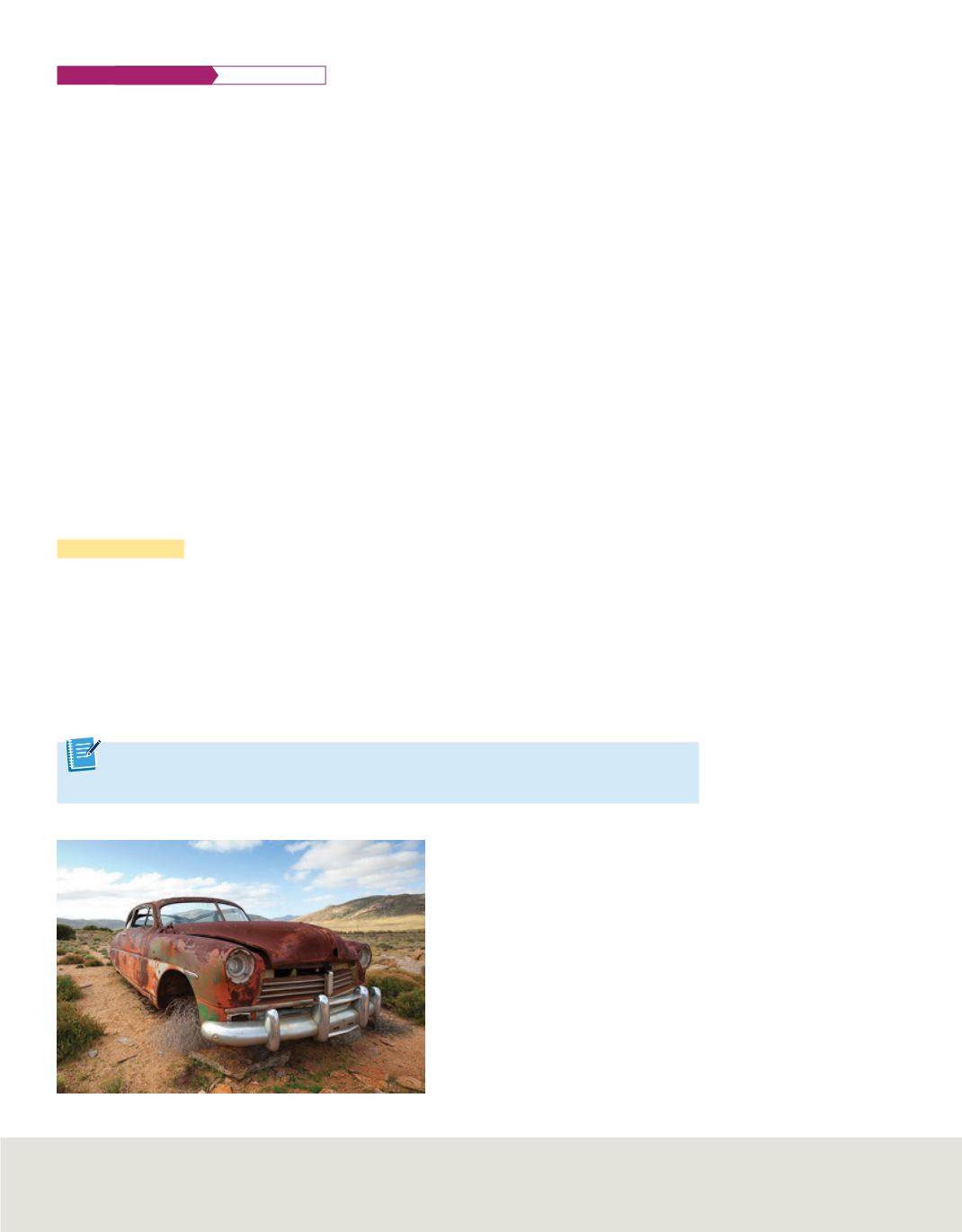

Figure 10
When iron rusts, new substances
are formed due to chemical change.
Identify
the reactants and products in the
formation of rust.
Get It?
Define
chemical change.
EARTH SCIENCE
Connection
The water cycle
Phase changes associated with
water make up the water cycle, which allows life to exist on Earth. At atmospheric
pressure and at temperatures of 0°C and below, water is in its solid state, which is
known as ice. As heat is added to the ice, it melts and becomes liquid water. This
change of state is a physical change because even though ice and water have different
appearances, they have the same composition. If the temperature of the water increases
to 100°C, the water begins to boil, and liquid water is converted to steam. Melting and
formation of a gas are both physical changes and phase changes. Terms such as
boil,
freeze, condense,
vaporize,
or
melt
in chemistry generally refer to a phase change in
matter.
The temperature and pressure at which a substance undergoes a phase change are
important physical properties. These properties are called the melting and boiling
points of the substance. Look again at
Table 1
to see this information for several
common substances. Like density, the melting and boiling points are intensive physi-
cal properties. Tables of intensive properties, such as those given at the end of this
textbook or in the
CRC Handbook of Chemistry and Physics,
are useful tools in identify-
ing unknown substances from experimental data.
Chemical Changes
A process that involves one or more substances changing into new substances is called a
chemical change,
commonly referred to as a chemical reaction. The new substances
formed in the reaction have different compositions and different properties from the
substances present before the reaction occurred. For example, the formation of rust when
iron reacts with oxygen in moist air is a chemical change. Rust, shown in
Figure 10
, is a
chemical combination of iron and oxygen.
In chemical reactions, the starting substances are called reactants, and the new
substances that are formed are called products. Terms such as
decompose, explode,
rust, oxidize, corrode, tarnish, ferment, burn,
or
rot
generally refer to chemical reactions.
56
Module 2 • Matter—Properties and Changes
Anthony Grote/Gallo Images ROOTS RF/Getty Images









